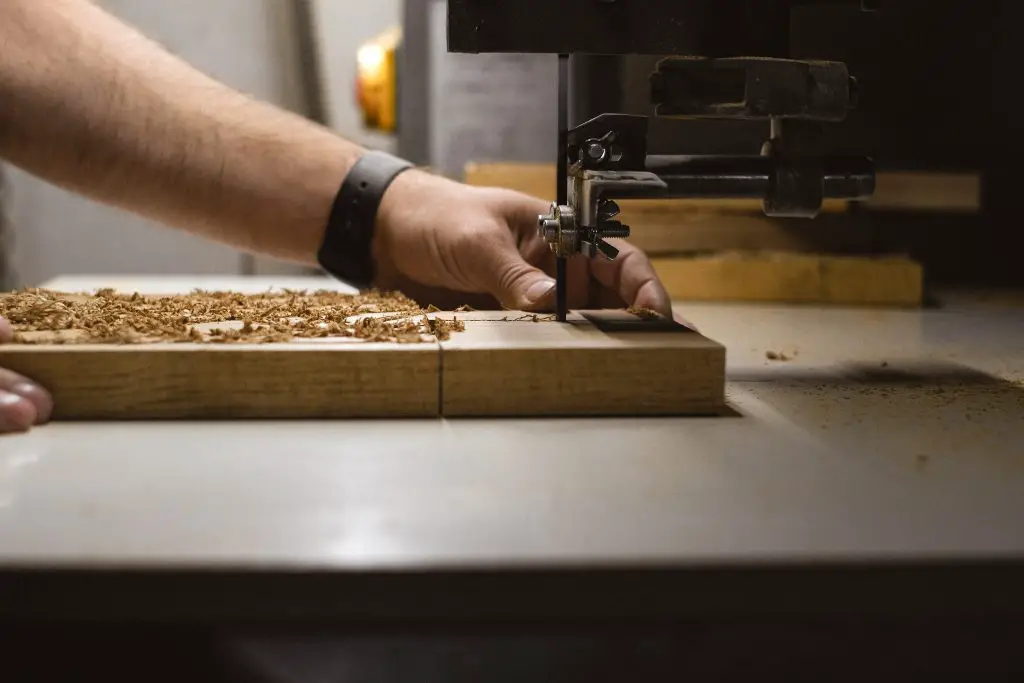There’s arguably no better tool for cutting large sweeping curves than a well-tuned bandsaw. But a quality bandsaw does a lot more than just cut curves. It can also cut tenons and smaller rabbets, and you can use it to re-saw thin strips of wood from bigger pieces. The versatility of a bandsaw can provide you with a wealth of unique design possibilities, but choosing the right bandsaw that’s best suited to your workshop can be easier said than done. To help you select the best type, check out the following helpful guide.

Types of Bandsaws
While bandsaws come in a variety of lengths and capacities, there are two main types of bandsaws: floor-standing cabinet models and shorter models that can be mounted on a benchtop or a dedicated stand. The former is typically used by professional workshops while the latter is more commonly used by amateurs. So, the type you choose could be dependent on whether you use your workshop for fun or commercial purposes. However, plenty of amateurs do use floor-standing models because they generally have larger motors and more features; such as a strong frame that enables consistent cutting. Whichever type you choose, you can save money by purchasing a used bandsaw. You’ll find reconditioned bandsaws for sale from leading brands like Hyd-Mech, HEM, and Amada that are just as good as brand-new bandsaws but which are much more affordable.
Frame Styles
The two most popular frames for bandsaws are cast-iron frames and steel frames. The former has been around for decades. They are typically available in a 14-inch platform and consist of two large machined castings. Cast-iron bandsaws are ideal for everyday operations, although their cutting capacities and motor size limitations can affect the types of processes you can perform. Steel frame bandsaws have been available in Europe for some time, but they have only recently become a big thing in the American market. The one-piece steel frames are constructed from heavy welded sheets of steel. Steel-frame bandsaws enable woodworkers to increase cutting capacities while maintaining strength. Steel-frame bandsaws are available in a wide variety of sizes, ranging from 12 inches up to 24 inches.
Motor Sizes
When trying to determine the best bandsaw for your workshop, it’s important to consider the size of the motor. Smaller models primarily designed for amateur use typically feature a ¾-1 horsepower motor whereas models designed for professional use have much larger motors and variable speeds. So, consider the tasks you will be using your bandsaw for to determine the best motor size for you.
Cutting Capacities
Two crucial things to keep in mind when looking at bandsaws to buy are the throat and the depth of the cut. The throat refers to the distance between the blade and the vertical frame. It determines the width of the cut. Free-standing cabinet bandsaw throats typically exceed the 12-inch to 14-inch throats of smaller benchtop bandsaw models. The depth of the cut refers to the distance between the workbench and the upper blade guides, so you’ll know what the stock piece’s thickness level is for cutting through.
Blade Guides
Bandsaws come with upper and lower blade guides. Each one consists of a trust support element and side-supports. Today, most manufacturers of bandsaws know how important the quality of blade guides is, so most bandsaws come with excellent blade guides. The two most popular types are bearing blade guides and ceramic blade guides. Bearing guides are the most common. They use sealed bearings to guide and support the bandsaw’s blade. Ceramic guides are even better. They don’t have any moving parts and the ceramic material dissipates heat from the blade, thus providing it with longer life. So, carefully consider each blade guide option for the tasks you’ll be performing in your workshop. If you want a bandsaw for occasional use, bearing blade guides should be fine for your purposes. But if you’re intending to use your bandsaw regularly, you may want to consider one with ceramic blade guides.
Horsepower Requirements
The horsepower requirements will depend on your cutting demands. If you will be mostly cutting thin stock with minor re-sawing, a motor with a 1-1/2 horsepower motor should suffice. On the other hand, if you want to make your own veneer via re-sawing exotic hardwoods, you will be better off with a motor that has 2-1/2 to 3 horsepower. Also, bear in mind that motors rated at 2 and above typically need a 220-volt electricity supply.
So, what type of bandsaw should you choose?
At the end of the day, only you can determine what type of bandsaw is best suited to your workshop. Your choice will depend on things like the tasks you intend to perform and how often you intend to use your bandsaw. But armed with the above information, you will be able to make the decision much more easily.



